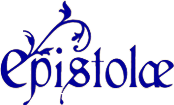Ediva (Edith) of Winchester
Overview
Biography
Ediva, the founder of Godstow Abbey, was born c.1080, to an English family. Presumably their only child, she inherited their possessions in Winchester c. 1110. She married an Anglo-Norman knight, William of Launceleve/Launcelene, c. 1100. They had at least 3 children, one son who reportedly became abbot of Abingdon,* and two daughters, Emma and Hawise, who were the first two prioresses of Godstow under their mother’s regime. Ediva was widowed between 1105 and 1115. According to the Anglo-Norman narrative cited at the beginning of the cartulary, #2, dream-visions told Ediva to go to a place near Oxford -- she went to Binsey – and await signs; there a divine voice instructed her to find a light from the sky and found a convent there. The abbey was probably founded c.1115, its church dedicated in 1139. The abbey had royal support from Henry I and Stephen, as well as the empress Matilda and her son Henry II. No charters recording gifts from Henry exist, but Matilda claims in a charter of donation that she and her father founded the abbey (Cartulary, #643); Stephen confirms various gifts and possessions (#7).
The abbey’s cartulary includes numerous documents that record or confirm gifts to the abbey, naming Ediva as the head or founder in one mode or another (“Edive sanctimoniali et omnibus sanctimonisalibus sue congregatrionis,” #3, “sub …regimine memorabilis matrone deo devote Edithe que loci illius ecclesiam … a primo lapide prudenter edificavit,” #6, “concedi et dedi domine Edive de Godestowe et ecclesie sue,” #108). Ediva served fifty-one years as abbess; she had died or retired by 1167, when her successor is named. A papal document calls her “prioress” (#770, “priorisse”), either in error or perhaps because she was never formally made an abbess. But her successor is called the “second abbess,” (#273, “secunde abbatisse”), and the preface to the cartulary refers to her as the “first abbess” (#1, “dominam Edivam Lanceleve primam abbatissam”).
The information in this biography comes from the introduction to The Latin Cartulary of Godstow Abbey, ed. Emilie Amt (Oxford: Oxford University, 2014). I was made aware of Ediva by Emilie Amt’s earlier piece on her, “The Foundation Legend of Godstow Abbey: A Holy Woman’s Life in Anglo-Norman Verse,” in Writing Medieval Women’s Lives, ed. Charlotte N. Goldy and Amy Livingstone (New York: Palgrave Macmillan, 2012), 13-31.
Letters to Ediva (Edith) of Winchester
A letter from Eugenius IIIA letter from William of Salverville

